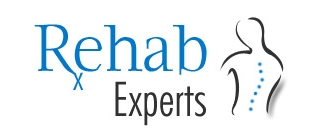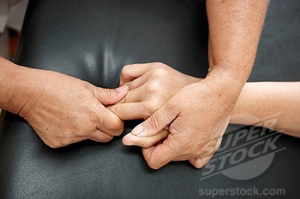Hemiplegia
The word ‘plegia‘ means weakness so severe that it is nearly complete. ‘Hemi‘ implies one side of the body. Hence, ‘hemiplegia‘ means complete paralysis of one half of the body, including one arm and leg. Any disease or injury in the motor centers of the brain can cause hemiplegia.
Hemiplegia is a more severe form of ‘hemiparesis‘ wherein one half of the body is only weakened. It is also very different from the conditions of paraplegia & quadriplegia, which are commonly confused with hemiplegia. Paraplegia is paralysis in both legs, below the waist. Quadriplegia is paralysis below the neck and is also usually the result of a spinal cord injury.
Causes of Hemiplegia
Many conditions give rise to hemiplegia. Generally, an injury to the right side of the brain will cause a left-sided hemiplegia while an injury to the left side of the brain will cause a right-sided hemiplegia.
- Stroke: is the commonest cause of hemiplegia. Insufficient blood supply to the brain leads to loss of brain functions. The stroke may be caused by:
- A clot formed within the blood vessel blocking the blood supply’-> a thrombus
- A thrombus breaks away from its site of origin and forms a block elsewhere in the circulation. -> an emboli
- A bleed from a blood vessel supplying the brain -> a hemorrhage
- Head injury
- Diabetes
- Brain tumor
- Infections -> meningitis, encephalitis
- Migraine syndrome -> recurrent headaches of severe intensity occasionally accompanied by sensations of numbness and tingling in one half of the body.
- Inflammation of the blood vessels -> vasculitis
- Diseases affecting the nerves -> like Multiple Sclerosis; acute necrotizing myelitis.
- Conditions presenting from birth -> cerebral palsy. Lack of blood supply damages nerve cells in the brain. Birth trauma, difficult labor, perinatal strokes in infants within 3 days of birth can all cause cerebral palsy.
- Hereditary diseases -> leukodystrophies. This is a rare disorder affecting the myelin sheath which covers and protects nerve cells in the brain. The condition usually appears in infancy or childhood.
Symptoms of hemiplegia
Injury or insults to the brain cells that control movements in one half of the body cause hemiplegia. Hence, symptoms largely depend upon the part of the brain affected. The same can be said about the severity of individual symptoms.
- Difficulty in walking.
- Problems in balance, losses balance when trying to walk
- Difficulty in swallowing
- Trouble with vision. Blurred vision or weakness of the eyes.
- Speech becomes difficult.
- Numbness, tingling or loss of sensations on one half of the body.
- Loss of control over bladder and bowel movements leading to an inability to hold on to stool or urine.
- Unable to perform tasks like holding objects, tying laces, dressing oneself, buttoning etc.
- Feeling depressed
- Heightened emotional sensitivity with inability to handle stressful situations.
- Memory seems poor. Unable to recall recent or past events concerning people, places and activities.
The presentation will also depend on which side of the brain is damaged.
- Right hemiplegia is caused by damages n the left hemisphere while with left hemiplegia it is vice versa.
- Right hemiplegia most often shows -> loss of sensations on left side. There will be difficulty in understanding the spoken or written word -> condition called aphasia.
- Left hemiplegia often presents itself after right cerebral hemisphere damage. It usually presents with
- Loss of control over purposeful movements.
- Unable to use objects correctly.
- Unable to draw, comb hair or cook.
Conditions like Alternating Hemiplegia have recurring episodes of hemiplegia. But, attacks are generally preceded by warning symptoms like –
- Yawning
- Fatigue
- Appearing very exhausted
Pure hemiplegia has to be differentiated with Alternating Hemiplegia that affects children. Though relatively rare, this condition has recurring episodes of weakness in one half of the body alternating with periods when there are no weaknesses. During an attack, the child may suffer from the many symptoms of a stroke. They may develop long term sequelae like movement disorders and behavior problems.
Diagnosis
Doctors may want a few procedures done to find the cause of hemiplegia. Some required tests are:
- Complete blood count.
- Blood biochemistry test.
- Cranial CT -> a highly detailed, non-invasive, imaging procedure that combines x-rays with computer technology and allows the study of the brain from many angles.
- Cranial MRI -> a non-invasive, highly sensitive procedure that uses electromagnetic properties of tissues providing detailed studies of their structures.
- An EEG (electroencephalogram) -> can measure the nerve activity within the brain.
Rehabilitation
Individuals who suffer from hemiplegia may require various rehabilitation services, including physical therapy, occupational therapy, speech therapy, and orthotic management. Rehabilitation services should occur at a frequency of 2 to 3 times a week.
Occupational therapy focuses on regaining the ability to perform activities of daily living. Individuals learn to perform tasks while sitting down on a kitchen stool. By instructing individuals in tasks such as these, occupational therapists also engage in balance retraining. Individuals also learn dressing and bathing techniques. Occupational therapists may order equipment to assist individuals.
Occupational therapists also promote the return of upper extremity and hand function through a variety of activities. Often the upper arm separates (subluxes) from the shoulder girdle because of a loss of muscle tone. Occupational therapy may use neuromuscular electrical stimulation (NMES), in which electrodes provide external stimulation to the muscles to counteract this symptom. More frequently, individuals wear a hemi-sling that helps support the arm to prevent subluxation. Occupational therapists may stretch the upper extremities and teach self-stretching techniques so that the arm can regain maximum potential. Individuals also learn strengthening exercises and practice tasks that require the affected hand to bear weight, thus sending nerve impulses to the brain so that damaged neural paths can begin to heal. Individuals engage in tasks that require both hands, such as holding a cup with the hemiplegic hand while pouring a drink using the good hand. As function returns, individuals may engage in fine motor tasks such as handwriting.
Occupational therapists also are instrumental in helping an individual perform activities of daily living, such as housecleaning, gardening, and practicing arts and crafts. They also help individuals learn how to adapt to driving and provide on-road training, which may be an important consideration in returning to work.
Physical therapy focuses on stretching and strengthening the hemiplegic side. Therapists may passively stretch the affected side. Individuals and their family members learn to perform a stretching and strengthening program for the legs. Physical therapy also focuses on transfer training. The therapist teaches the individual to bear weight evenly when sitting and standing so that the individual is aware of the hemiplegic side. Individuals also learn mobility techniques such as walking and climbing stairs while using a pyramid cane or 4-pronged cane. For those individuals who cannot walk, the physical therapist may order a special wheelchair, called a hemi-chair, which can be propelled using only the good arm because a special axle connects the wheels.
Orthotic management may also be required for individuals to regain function. Occupational therapists may make an individual a night splint, which positions the thumb and fingers so that the hand forms the letter “C.” This position places the hand in a functional position, allowing for full use of the hand if strength returns. An orthotist, who custom-fits braces and splints, may make an individual a leg splint to promote better control of the ankle and knee during ambulation.
Speech therapy may be required to strengthen the muscles of the face for improved speech and swallowing. Individuals learn to move the facial muscles in a balanced manner, both by manual assistance and visual cueing through the use of a mirror. Individuals perform tongue exercises to allow for better speech and eating. Activities such as sustained vocal expressions help individuals learn to speak with greater clarity. Individuals begin eating semi-moist, pureed food, which is easier to swallow, and progress to eating food rich in taste, smell, and texture to assist in the swallowing reflex. Individuals also learn to achieve sucking control and saliva production.
Reference
Life Force http://www.askdrshah.com/app/hemiplegia.asp
MD Guidelines http://www.mdguidelines.com/hemiplegia


